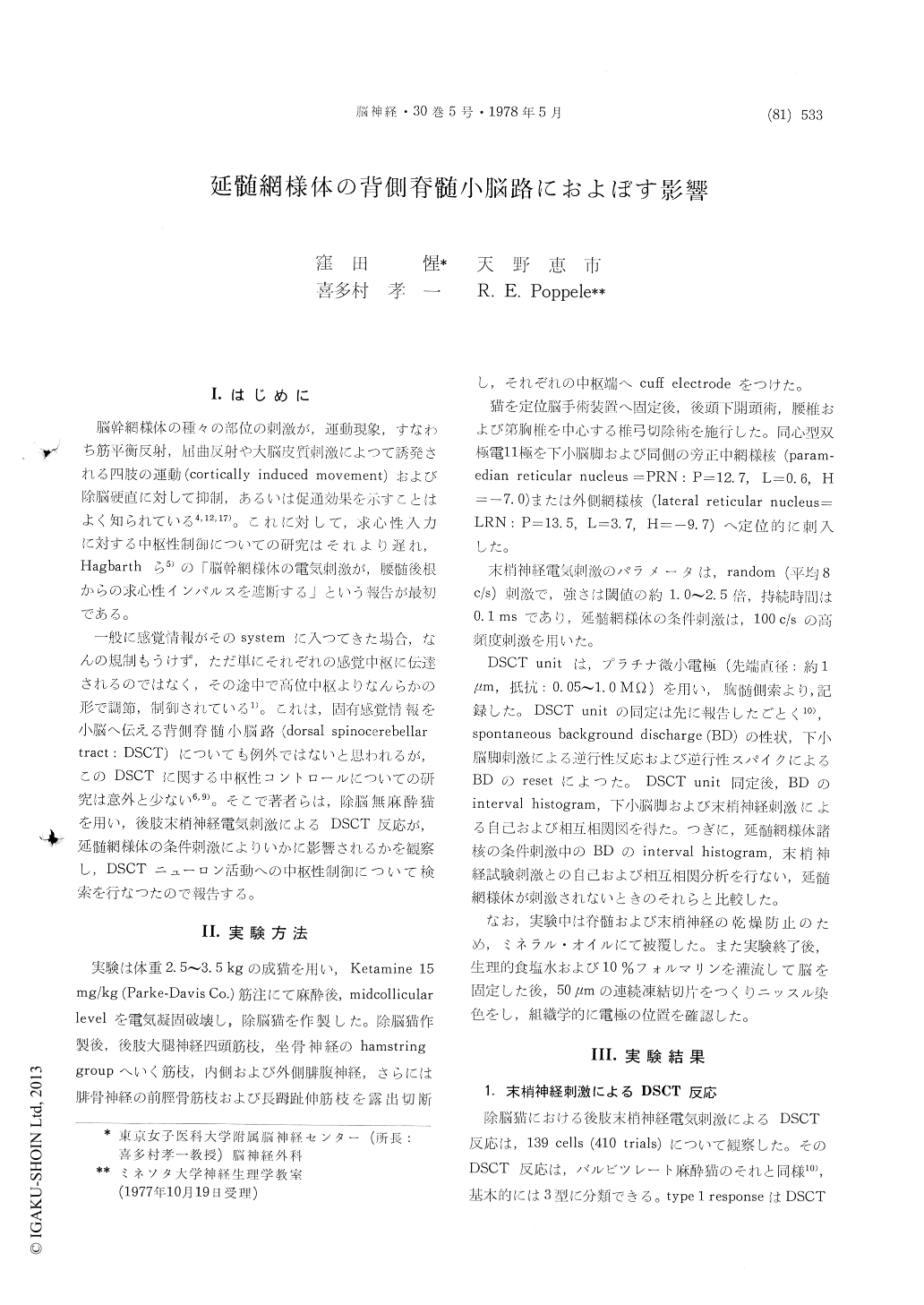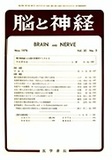Japanese
English
- 有料閲覧
- Abstract 文献概要
- 1ページ目 Look Inside
I.はじめに
脳幹網様体の種々の部位の刺激が,運動現象,すなわち筋平衡反射,屈曲反射や大脳皮質刺激によつて誘発される四肢の運動(cortically induced movement)および除脳硬直に対して抑制,あるいは促通効果を示すことはよく知られている4,12,17)。これに対して,求心性入力に対する中枢性制御についての研究はそれより遅れ,Hagbarthら5)の「脳幹網様体の電気刺激が,腰髄後根からの求心性インパルスを遮断する」という報告が最初である。
一般に感覚情報がそのsystemに入つてきた場合,なんの規制もうけず,ただ単にそれぞれの感覚中枢に伝達されるのではなく,その途中で高位中枢よりなんらかの形で調節,制御されている1)。これは,固有感覚情報を小脳へ伝える背側脊髄小脳路(dorsal spinocerebellartract:DSCT)についても例外ではないと思われるが,このDSCTに関する中枢性コントロールについての研究は意外と少ない6,9)。そこで著者らは,除脳無麻酔猫を用い,後肢末梢神経電気刺激によるDSCT反応が,延髄網様体の条件刺激によりいかに影響されるかを観察し,DSCTニューロン活動への中枢性制御について検索を行なつたので報告する。
Effects of bulbar reticular tetanic stimulation on the responses of dorsal spinocerebellar tract (DSCT) units were studied in the decerebrate cat.
The conditioning stimulation of lateral or para-median reticular nucleus was found to reduce polysynaptic activation of DSCT cells (type 3 response) selectively without affecting either the spontaneous background discharge or the mono-synaptic activation (type 1 response) or inhibition (type 2 response) by afferent inputs from the peripheral nerves of hindleg.
These results show that the descending inhibition to the polysynaptic activation of DSCT cells occurs presynaptically by reticulospinal pathways from brain-stem reticular formation.

Copyright © 1978, Igaku-Shoin Ltd. All rights reserved.


